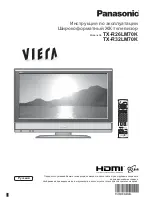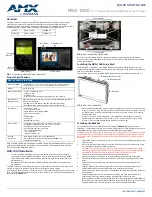
Crestron
ST-1700CIR
IR Wireless Touchpanel
MultiByte International Characters
Most languages use a single byte of 8 bits to represent a character, e.g., English,
French, German, Hebrew, Russian, Thai, etc.
Multibyte character fonts require more than the usual eight bits to specify a
character. This occurs when a language has more than 256 characters (2
8
) in a font.
For example, Chinese fonts contain several thousand characters. Other multibyte
languages include Japanese and Korean.
There are two separate issues with multibyte characters - static text on buttons and
indirect text on buttons. No Isys touchpanel firmware changes are required in either
case.
Static text on a button, entered in the standard way in VT Pro-e, always works under
Windows 98. Under Windows XP, you must use VT Pro-e 3.0 or later.
Indirect text on a button is entered in VT Pro-e and the actual string to be displayed
is entered in SIMPL Windows. You must use VT Pro-e 3.0 or later to guarantee that
the full set of characters in the font is stored on the touchpanel. You must use SIMPL
Windows 2.03.11 or later to enter Chinese characters directly. As of this publication
date, only completely single-byte or completely multibyte strings may be entered or
they will not be compiled correctly in SIMPL Windows. In other words, you cannot
enter Chinese character interspersed with numbers. You can enter Chinese characters
or numbers in separate strings. Crestron is scheduling time to fix this in the near
future and the release notes for SIMPL Windows will mention it.
Of course, you can always use the workaround of showing a graphic that displays the
string, but it is not dynamic. To compile and use multibyte characters, it is essential
that the operating system understand the language. Windows XP is available in many
international languages and add-on software is available for other versions of
Windows.
Virtual Feedback
Programming a one-way IR
touchpanel such as the ST-1700CIR requires
consideration of “feedback.” Since the panels are one-way only, and there is no
true
feedback, you must create "virtual feedback" so that buttons respond appropriately
when pressed and the user perceives no real difference between a one-way panel and
a two-way panel. SystemBuilder takes care of all of this for you. However, if you are
programming your panels with SIMPL Windows and VT Pro-e, you must use the
following procedures to add logic both to the touchpanel for button feedback and to
the control system program to properly process the signals, and to make sure that the
state of the buttons on the panel and in the control system remain in sync.
Button press feedback produces a change in appearance from the inactive state to the
active state, or vice versa, as defined in the program.
•
Momentary feedback, from inactive to active and back to inactive, has a
short duration, lasting only as long as the button is pressed.
•
Toggle feedback produces a change of state each time the button is pressed.
•
With Interlock feedback, only one button in an assigned interlock group can
be active at a time. Pressing an inactive button changes its state to active,
and forces the other buttons in the group to inactive. (To clear all buttons in
the interlock group requires that an extra button be added whose sole
purpose is to force all the others to the inactive state.)
•
Duration feedback is assigned to a button that is to be activated and remain
active for a specified period of time, and then return to the inactive state.
Operations Guide – DOC. 6469
SmarTouch™ IR Wireless Touchpanel: ST-1700CIR
•
15
Содержание SmarTouch ST-1700CIR
Страница 1: ...Crestron ST 1700CIR SmarTouch IR Wireless Touchpanel Operations Guide...
Страница 4: ......














































